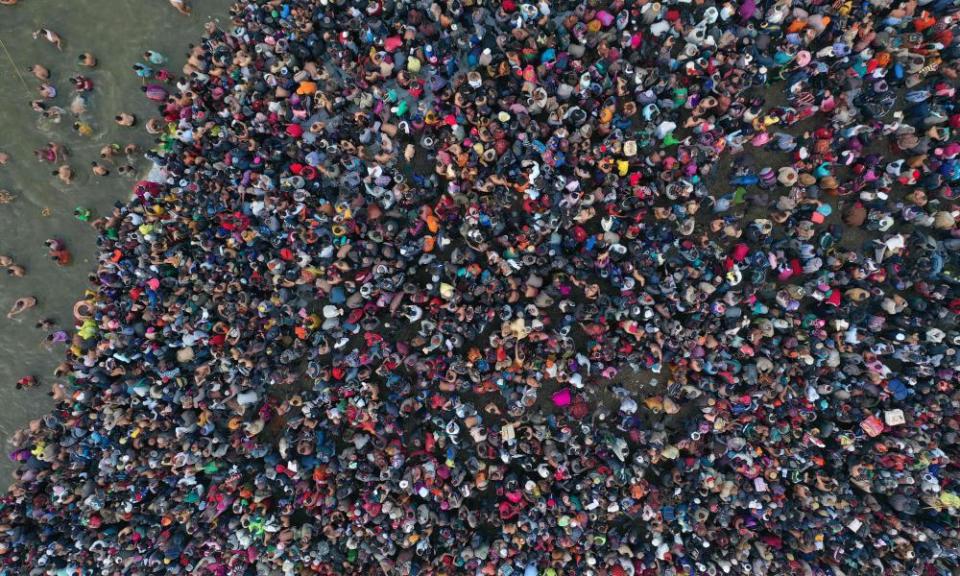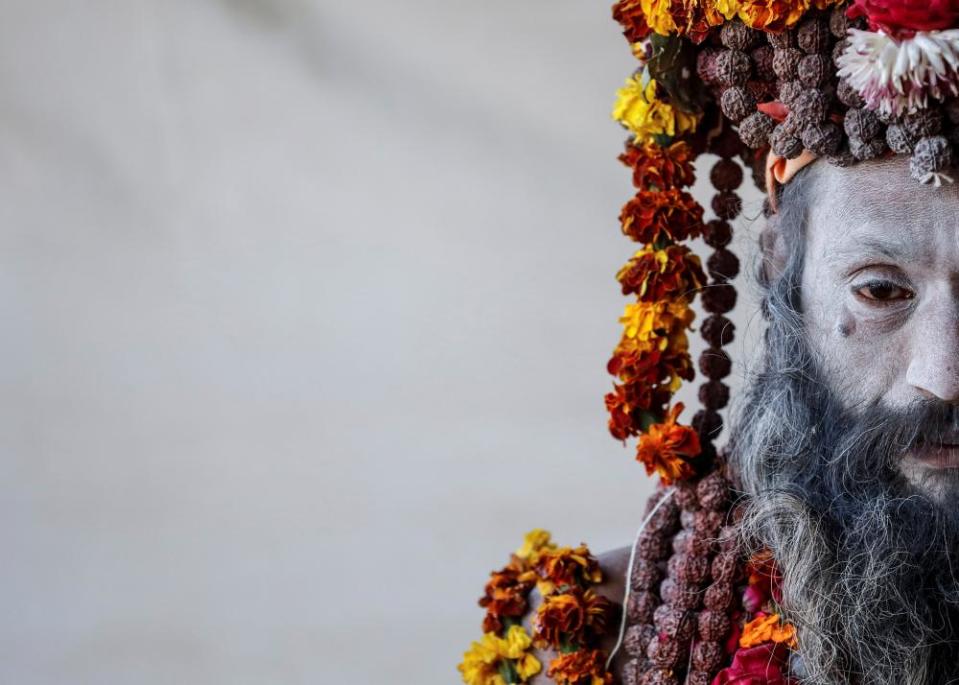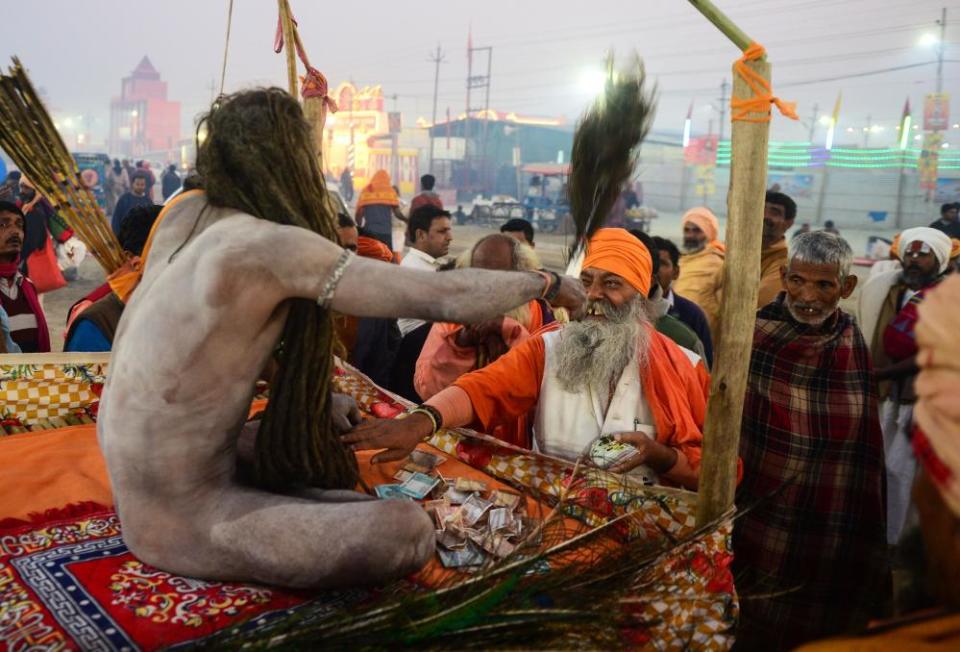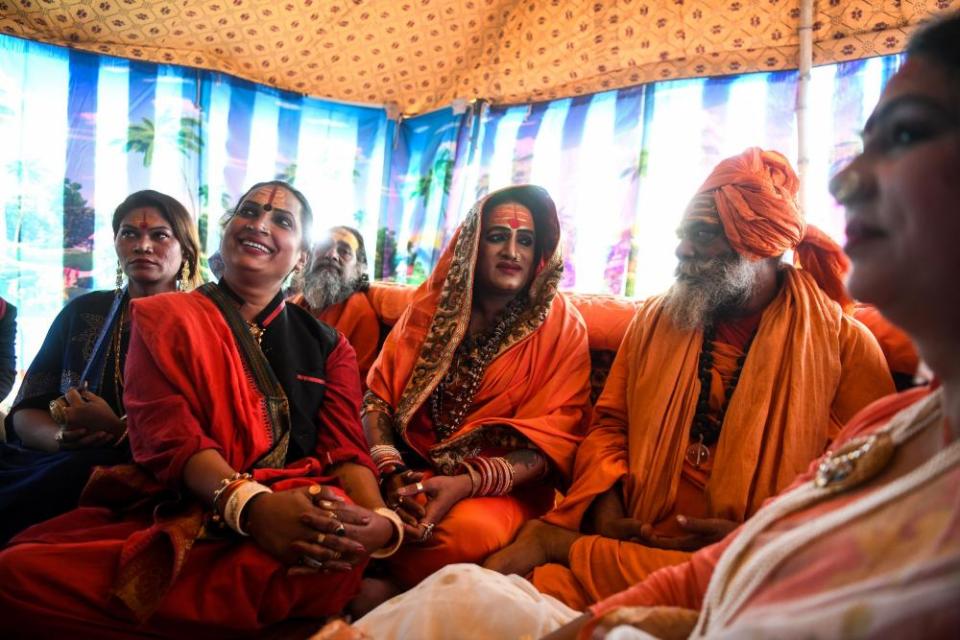'I have lost my wallet and brother': reuniting at Kumbh Mela, the world's largest festival

Day and night, through crackling loudspeakers, the announcements ring out. “It is Babu speaking,” says a shrill voice. “I have lost my wallet and brother. Please come here the moment you hear this.”
“Lal Ram is here,” a woman says a few times. “Come and collect him from the yellow tower.”
“Whoever has taken my trousers, that were drying on my car,” booms a voice in Bengali. “At least return the car keys from the pocket. You can keep the trousers.”
It is the first day of the largest human gathering ever. An estimated 15 million Hindus have come together at the convergence of the Ganges and Yamuna – two holy rivers in north India. Up to 10 times that many – more than the population of Russia – could bathe in the waters by the end of the festival in March.
Children step between thickets of adult legs. Older pilgrims walk hunched over, eyes fixed to the ground. They and millions of others will be carried along in vast human waves to the water. Hundreds of thousands will get lost on the way.
“We calculated last time we had 225,000 missing people,” says Devesh Chaturvedi, the head of the team that organised the last Kumbh Mela in the city, in 2013.

High above the festival grounds, a pop-up city of tents and dusty roads about two-thirds the size of Manhattan, two giant yellow balloons hover. They mark the two lost-and-found centres that have become operational so far. By mid-morning, one centre is already heaving with lost men, women and children.
“After taking a dip I felt sick and couldn’t get back to my group,” says an older man named Papon. He was found wandering in the crowd, freezing and in his underwear. “I’m wearing someone else’s clothes now,” he says, pulling a blanket around himself.
“For the last 24 hours I haven’t eaten,” says Shripath, burying her head in a green shawl. Barely able to walk, she was put on the back of a motorbike the previous day by her brother. He said he would meet her closer to the river, but they lost each other.
She knows the name of her village, but not which state or district it is in, and does not know any of her family’s phone numbers. She has been lost before at another festival in the mountains of Uttarakhand. “I wish I had never come,” she says. “Just take me back to my village. My grandchildren are there.”
Twins who become separated at the Kumbh Mela and rediscover each other decades later was once a stock Bollywood storyline. Folks tales abound of heartless families taking burdensome older relatives to the festival and abandoning them there.
In reality, most of the lost are found. This year the operation has gone digital, including an app with live updates of every new registered missing person.
“The biggest challenge we face are the people,” says Mamta Tamboli, a manager with the IT firm running the lost-and-found system. India has 22 official languages and an estimated 720 dialects. Most who attend the Kumbh Mela hail from small villages they might rarely have previously left. New India, with its sleek software solutions, keeps crashing up against the old.

“Around 90% [of the people who get lost] are illiterate,” says Tamboli. “They don’t know their mobile numbers, their district’s name. We have to try to understand, what are they saying? What language are they speaking?”
Prasanna Uguonkar, who oversees the centre, says most people will spend only a few hours there. “Our experience is that we will locate [the families on] 70% on that day, within weeks it’s about 90%, and by the end of the Kumbh Mela around 99%,” he says.
Those who are never reunited or go missing permanently may be mentally ill or could have chosen to run away, he says. Others go missing for even darker reasons.
“We have studies now that show at large events the risk of trafficking increases,” says Dhananjay Tingal, from the child’s rights group Bachpan Bachao Andolan, which is working at the festival.
No data has been collected, but he knows from experience at other Hindu fairs that traffickers see the events as opportunities. “You see the large number of children moving around the area, or working with their parents,” he says. “In a crowd moving like that, a child who falls even five paces behind cannot be seen.”
Uguonkar says his team is aware of the risks. He recounts a story of a boy who was lost at another festival he worked at. A man claiming to be his uncle arrived at the centre to collect him.
“An assistant asked the boy: ‘Do you know this man? Do you recognise him?’” he says. The child hesitated. “So we said no, we aren’t handing over.”

By the end of the first day, all who were in the lost-and-found centre in the morning had been reunited with their families, except for Shripath and another older woman beside her. In a few hours, they will be handed over to an organisation for destitute women.
“Nobody is coming to pick us up,” Shripath says. “I’ve been crying so much I can’t open my eyes. Just put me on a train and I’ll get home myself.”
Additional reporting by Kakoli Bhattacharya in Prayagraj

 Yahoo News
Yahoo News 